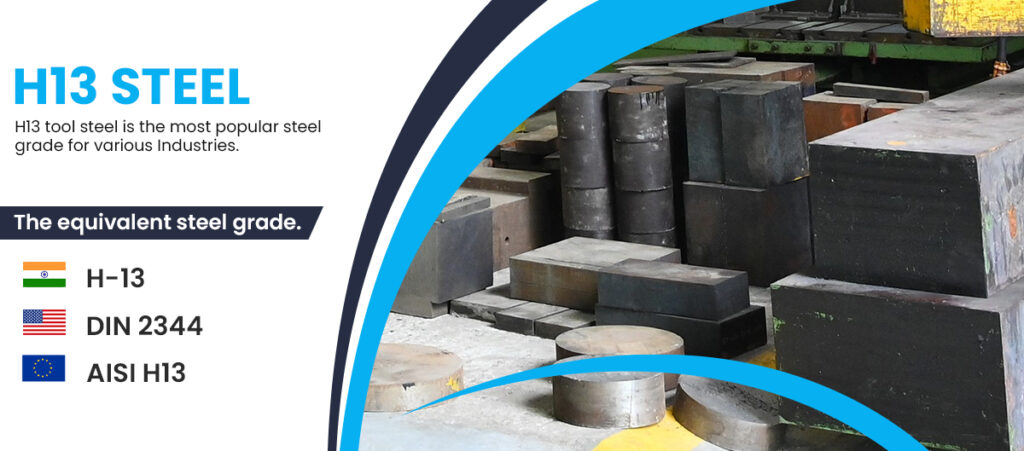H13 Hot Work Tool Steel Supplier
now browsing by tag
How to Select H13 Hot Work Tool Steel for Die Applications?
Choosing the right steel for die-making is like laying a solid foundation for a building. It’s the cornerstone that ensures durability, efficiency, and precision in manufacturing processes. Among the wide range of tool steels, H13 hot work tool steel stands out as a preferred choice for die applications.
Why? Its excellent combination of toughness, temperature resistance, and durability makes it a favorite across various industries, from automotive to aerospace.
In this guide, we’ll explore everything you need to know about selecting H13 hot work tool steel for your die applications, including what makes it unique and the key factors to consider.

What is H13 Steel?
H13 is a chromium-molybdenum-vanadium alloy steel, classified as a hot work tool steel. It is specially designed to endure high temperatures, resist thermal fatigue, and maintain structural integrity even under demanding conditions.
Key Properties of H13 Steel:
- High Thermal Resistance: Withstands extreme heat without losing strength.
- Toughness and Durability: Handles impact and wear during heavy-duty operations.
- Thermal Conductivity: Promotes effective heat dissipation, preventing die failure.
- Wear Resistance: Resists abrasion and erosion, extending die life.
Advantages of H13 for Die Applications:
H13’s balance of strength, hardness, and temperature resistance makes it ideal for hot-working operations such as forging, extrusion, and die-casting. It ensures fewer downtimes, consistent production quality, and reduced replacement costs.
Tips for Purchasing H13 Steel:
When buying H13 steel, consider these tips:
- Source from trusted suppliers like Virat Special Steels for consistent quality.
- Verify certifications and specifications.
- Request samples or small batches for testing before large-scale purchase.
Applications of H13 Hot Work Tool Steel in Die-Making
H13 steel is used across a broad range of die-making applications, including:
- Die-Casting Dies: Withstands molten metal temperatures and repetitive cooling cycles.
- Forging Dies: Handles high-impact loads without deforming.
- Extrusion Dies: Provides excellent resistance to thermal wear and pressure.
Maintenance of H13 Steel Dies:
Regular maintenance can significantly extend the life of H13 steel dies. Periodic inspections help identify early signs of wear, such as cracking or pitting. Implementing proper cooling cycles and using lubricants can further enhance the die’s performance and longevity.
Selecting the right H13 hot work tool steel for die applications involves understanding its properties, assessing your operational requirements, and choosing a reliable supplier. Its unmatched combination of toughness, thermal resistance, and durability makes it an indispensable material for demanding applications. By following the guidelines outlined in this article, you can make an informed decision that ensures optimal die performance and cost-effectiveness.
FAQ:
- What makes H13 steel unique for die-making?
Its exceptional balance of toughness, thermal resistance, and wear resistance. - How does heat treatment impact H13 steel performance?
Heat treatment optimizes hardness and toughness, enhancing durability. - What industries benefit the most from using H13 steel?
Industries like die-casting, forging, and extrusion heavily rely on H13 steel. - How to identify high-quality H13 steel suppliers?
Look for certifications, test reports, and a proven track record of reliability. - What are the common challenges when using H13 dies?
Issues like thermal fatigue and cracking can arise if not properly maintained.






